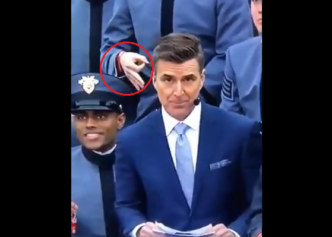Before Empire and Scandal, there was Sanford & Son. Comedy giant Redd Foxx starred in the 1970s sitcom about a cantankerous Black father who lives with his son in a junkyard. In 1972, they aired an episode where oral trauma compels Foxx’s character to visit a dentist. Insufferable tooth pain doesn’t quell his anti-Blackness; he proudly announces that he will only accept a white dentist, saying, “The best dentist schools are of the white people, by the white people, and for the white people.”
Of course a Black dentist greets him, and the laughs and insults erupt.
My lived experience won’t allow this anecdote to be dismissed as Blaxploitation-era drivel. My resume includes employment at a Black-owned Atlanta comedy club. The clientele, staff and performers were a cotton ball shy of being exclusively Black. One of the codified rules to efficiently manage capacity crowds was to place the only white employee at the ticket window. Reason: Black patrons were less likely to squabble about pricing or club policies when confronted with “the man”… at a Black-owned establishment.
These trivial incidents reflect the desired culmination of white terrorism. Racism demands that Black people harbor contempt for all people and things Black, reverence and fear of the total White collective. This injury siphons our courage to confront whites and pollutes our relationship with and vision for Black people—including ourselves.
Andrew Kahrl’s “The Land Was Ours” corroborates my workplace experience and illustrates how white supremacy warps our perception of and connection to Black people. The book explores Black citizens’ post-Civil War effort to own and develop beachfront property—and the gargantuan racist impediments whites concocted for their demise. Kahrl writes that some Black people labored mightily to keep a long distance between themselves and “common Negroes.” Part of this task included hiring “a white police officer whose primary duty was to keep out African Americans who did not conform to residents’ standards.”
It’s tempting to discard this narrative as an antiquated product of 20th century Jim Crow oppression. But Jodi Kantor describes an identical attitude in her 2006 New York Times exposé. She explored the dilemma facing many Black professionals who struggled to hire a nanny.
“Interviews with dozens of nannies and agencies that employ them… turned up many nannies — often of African-American or Caribbean descent themselves—who avoid working for families of those backgrounds. Their reasons included accusations of low pay and extra work, fears that employers would look down at them, and suspicion that any neighborhood inhabited by Blacks had to be unsafe.”
Marcus Kline directs Freedom Home Academy International, whose “purpose is building Afrikan children to be exceptional.” He concluded that generational white terror causes a number of Black parents to avoid or be suspicious about their child’s education being governed by a Black male instead of a White Woman or White Man. Racism (and Fred Sanford) decrees that expertise is white. No Black person is to command respect equal to a white person.

Even the Black-occupied White House is accused of “throwing shade” at Black people. The Atlantic’s Ta-Nehisi Coates charges that Mr. and Mrs. Obama have reserved “targeted scorn” exclusively for Black citizens. Coates states: “It is hard to avoid the conclusion that this White House has one way of addressing the social ills that afflict Black people—and particularly Black youth—and another way of addressing everyone else. I would have a hard time imagining the president telling the [mostly white] women of Barnard that “there’s no longer room for any excuses”—as though they were in the business of making them. Barack Obama is, indeed, the president of ‘all America,’ but he also is singularly the scold of ‘Black America.’”
Perhaps this revised “double consciousness” is the product of fear and the Obamas’ are indicative of Black people’s fear of whites. Surely Barack and Michelle Obama and many Black people remember the white rage in response to the president’s commentary on the 2009 arrest of professor Henry Louis Gates. President Obama chided suspected race soldier James Crawly for acting “stupidly” when he shackled Gates in his own residence. White power extracted hasty contrition and a recalibration of words from the first Black president, and he reserved all future unbridled reprimands for Black audiences.
Atlanta Blackstar reader and New York resident Thomas Smith makes it plain, stating that “Blacks collectively fear white retaliation and are scared of the repercussions” of getting too “turnt up” on white people.
Former McKinney, Texas police corporal Eric Casebolt provides the latest demonstration of what to expect when Black people fail to timidly submit to white power. He brandished a firearm and slammed a teenage girl to the ground for having the gall to question white authority. The bodies of Renisha McBride and Jonathan Ferrell illustrate that a Black person merely seeking aid from a white person may be summarily executed.
There’s no fear, no consequence for going HAM on Black people. It is white supremacy code to encourage hostility and devaluation amongst us. Historian Nathan Connolly appraises “the value of Negro life” in 20th century south Florida. Black Miamians reported that one “could hear young colored men threaten each other… saying, ‘I can kill you and get out for $100.’” Government policies foster a cheapness to Black life; policies that confirm Dr. Bobby E. Wright’s contention that we’ve been instructed to violate Black people and ignore our white enemies.
Racism produces frustrated, irate Black people, and our fury is always to be directed away from the source of the problem. Earlier this year, Priscilla Ward wrote about suppressing her “justified rage” to appease white folks. She recognized she was compromising her health “to ensure that [her] interactions with white people remain comfortable.” Collective white power compels us to do all we can to remain in whites’ good graces. Generally, there’s a lot less trepidation about transgressions against Black people.
Redd Foxx’s former co-worker offers profound insight on this matter. In his autobiography, Malcolm X remembers a random white girl asking if he believed there were any good white people. He said, “I didn’t want to hurt her feelings.” This episode was during his “white man is the devil” years. But he didn’t want to hurt this blonde “devil’s” feelings. There are many recordings of el-Hajj Malik el-Shabazz excoriating Dr. Martin Luther King, former NAACP president Roy Wilkins and other Black people as “uncle toms,” “house n-ggers.” It’s unclear if their feelings were given the same consideration as this white girl.



